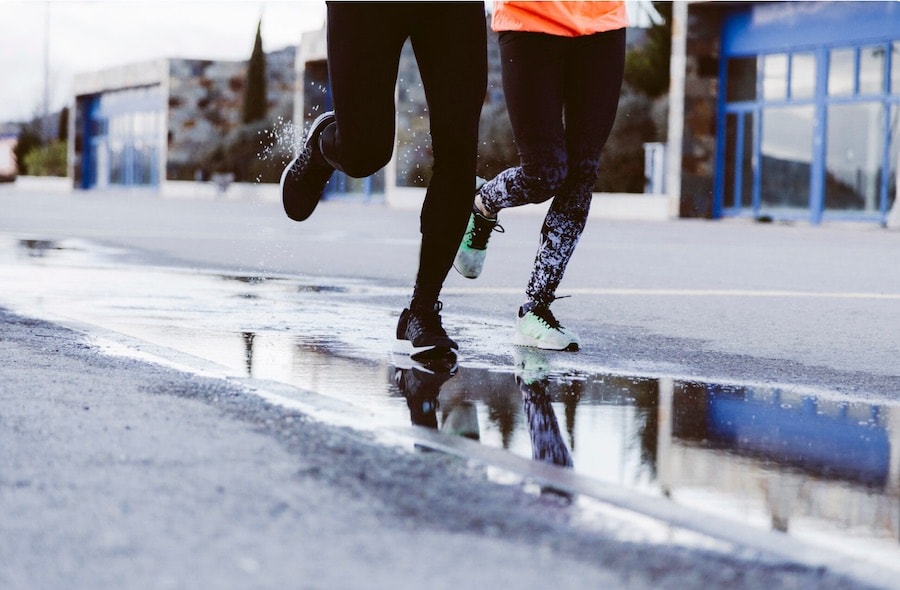
Ever notice how rain in the Philippines works on its schedule? You’re determined to stay active, but bad weather conditions like high winds and monsoon laughs at your calendar. It could be a “rainy day run” or even just a misty dash around the block—yet, something is compelling about the challenge.
The world gets quieter, the humidity drops, lights showers appear, you hear thunder from the distance, and there’s a little thrill with every splash. Behind every “rainy run” lies both a test and an opportunity: to keep healthy, strengthen your “mental toughness,” and add a little adventure to your week. This guide walks you through each step of safe, enjoyable monsoon running, so you finish stronger, rain or shine. So grab your favorite shoes, wear your running tights, and put on your running cap as we embark on the thrill of running in the rain.
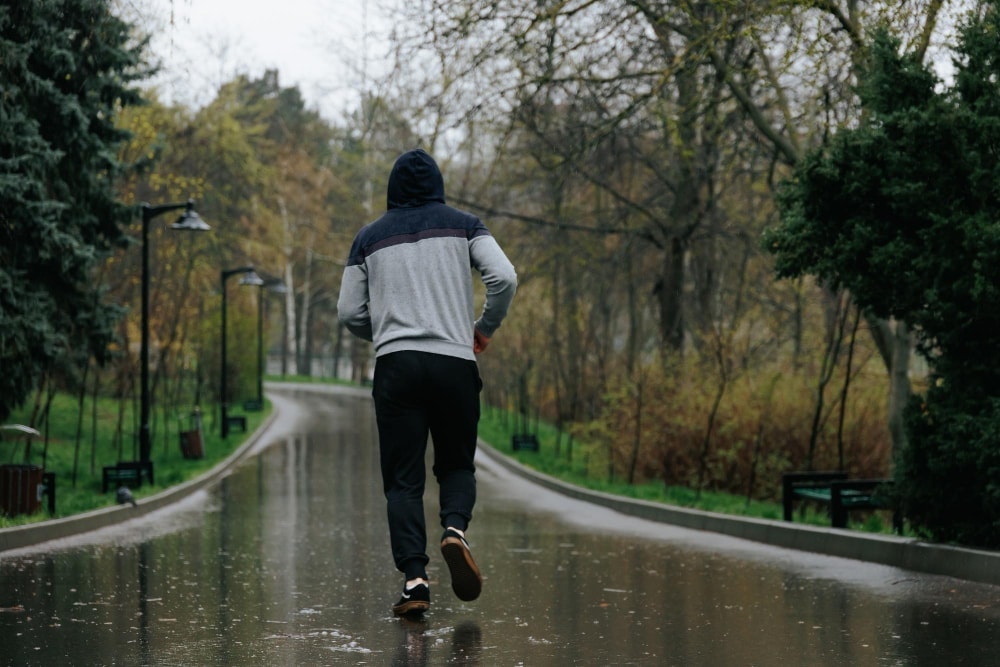
Running in the Rain: Finding Your Motivation and Staying Safe
Jumping into a rainy run is no one’s first choice, but sometimes, it can also provide significant mental health benefits and motivation. The act of overcoming these “rainy days” not only fuels a sense of accomplishment but also enhances your mental toughness. When you step outside in cooler rain, your body naturally regulates its temperature, allowing you to push harder without the risk of overheating. Embracing the rain can transform a dreary workout into an empowering experience.
To make the most of your rainy runs, it’s important to implement a few strategies. Start by warming up indoors to prepare your muscles for the workout ahead. Consider planning your routes near home or to a reliable shelter, which can help make your run more enjoyable and safer. During your run, focus on your breathing and stride; as the streets quiet down under the rain, distractions tend to fade away, creating a more meditative experience.
However, safety precautions are crucial when running in wet weather. Be vigilant about avoiding dangerous conditions such as deep water, poor visibility, or active lightning. Pay attention to your surroundings, especially for slippery leaves, painted lines, and hidden potholes. Shortening your stride can help you maintain stability on wet surfaces. If the rain becomes too extreme, it’s wise to move your workout indoors, prioritizing both your safety and well-being.
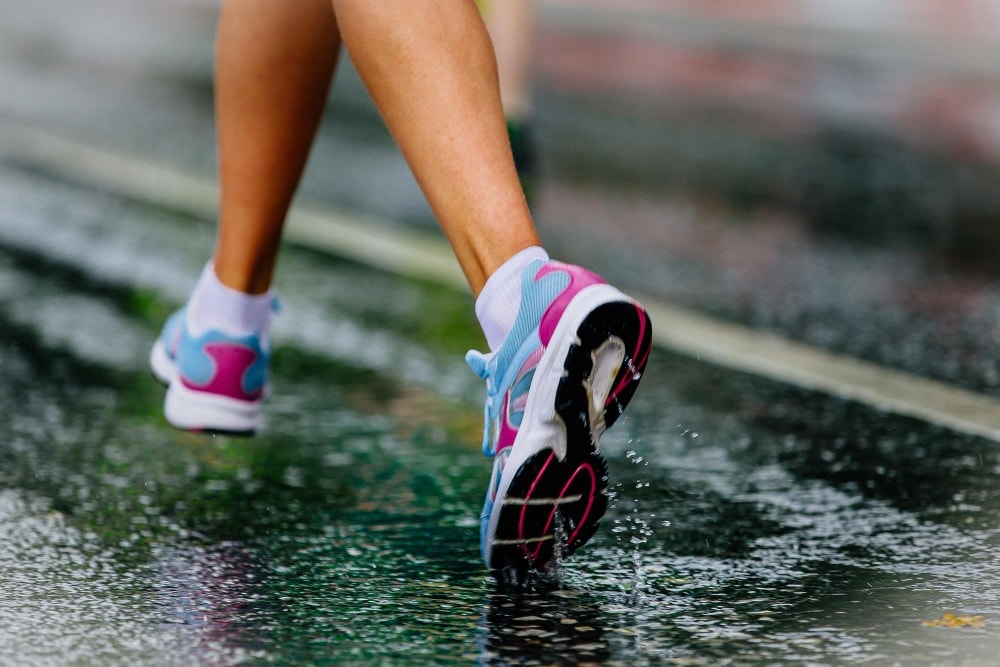
The Running Shoes Talk: Finding the Right Shoes
Rainy runs can be a real drag if you’re not geared up properly, right? There’s nothing worse than sloshing through puddles with soggy shoes, feeling every squish and slide. Not only is it uncomfortable, but it can totally throw off your stride and even lead to some pretty nasty chafing or blisters.
But here’s the good news: with the right waterproof running shoes, you can conquer those wet-weather runs and even enjoy them! The key is finding footwear that keeps your feet dry, gives you a solid grip, and fits like a dream, even when soaked.
Key Features to Look For
When you’re on the hunt for your next pair of rain-ready running shoes, keep these features in mind:
Traction
Look for shoes with rubber soles that have a textured grip for added traction. This is crucial for preventing slips and slides on slick surfaces.
Water Resistance & Quick-Dry
Opt for shoes that are either water-resistant or fully waterproof. Many good options will incorporate a waterproof membrane (like Gore-Tex) to keep water out, or feature quick-dry mesh materials that shed water efficiently and dry faster if they do get wet.
A Snug Fit
You want a fit that’s slightly snug but not tight. This helps prevent your foot from sliding around inside the shoe when it’s wet, which can be a major cause of blisters.
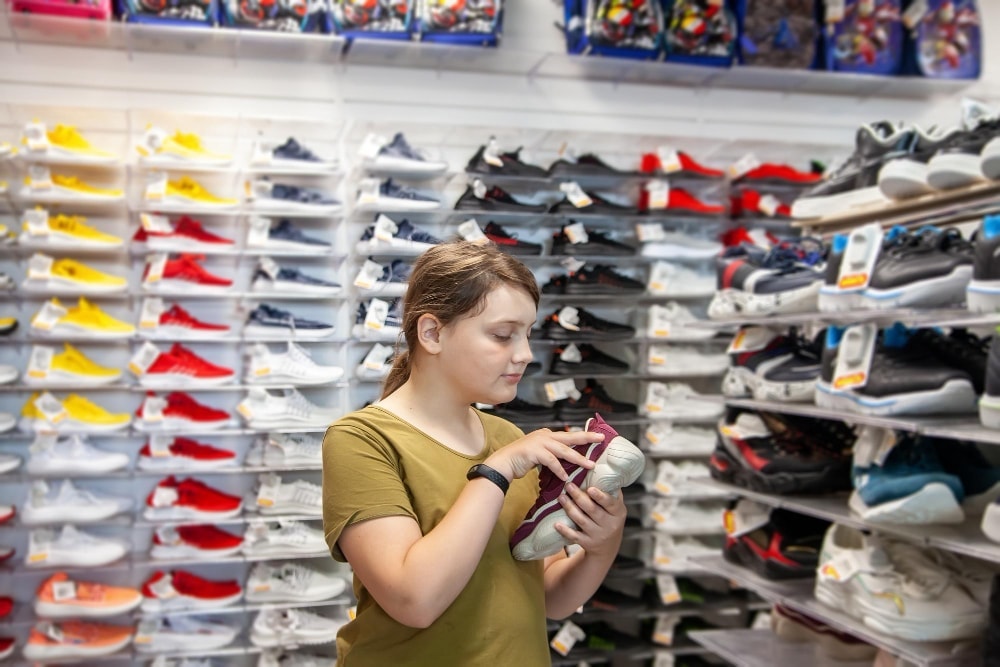
Looking for good shoes? you might want to check these out
Nike Pegasus Trail GTX (Pegasus Trail 5 GTX):
Why it’s great: This is a fantastic road-to-trail hybrid that truly shines in wet conditions. The “GTX” (Gore-Tex) upper provides excellent waterproofing, keeping your feet dry through puddles and light rain. The outsole offers reliable traction on both wet pavement and moderate trails, making it a versatile choice if your runs involve varied surfaces.
Hoka Speedgoat GTX (Speedgoat 5 GTX or 6 GTX):
Why it’s great: If your rainy runs take you onto more technical trails, the Hoka Speedgoat GTX is a powerhouse. Known for its maximal cushioning and aggressive Vibram Megagrip outsole with deep lugs, it provides exceptional traction on slippery mud, rocks, and roots. The Gore-Tex membrane ensures your feet stay dry even in very wet trail conditions.
Adidas Terrex Agravic Flow GTX / Terrex Swift R3 GTX:
Why it’s great: Adidas’s Terrex line is built for the outdoors. Models like the Agravic Flow GTX offer a good balance of cushioning and protection for varied terrain, transitioning well from wet roads to light trails. The Continental rubber outsole provides excellent grip on wet surfaces, while the Gore-Tex upper ensures waterproofing. The Swift R3 GTX is another solid option, known for its durable build and aggressive traction.
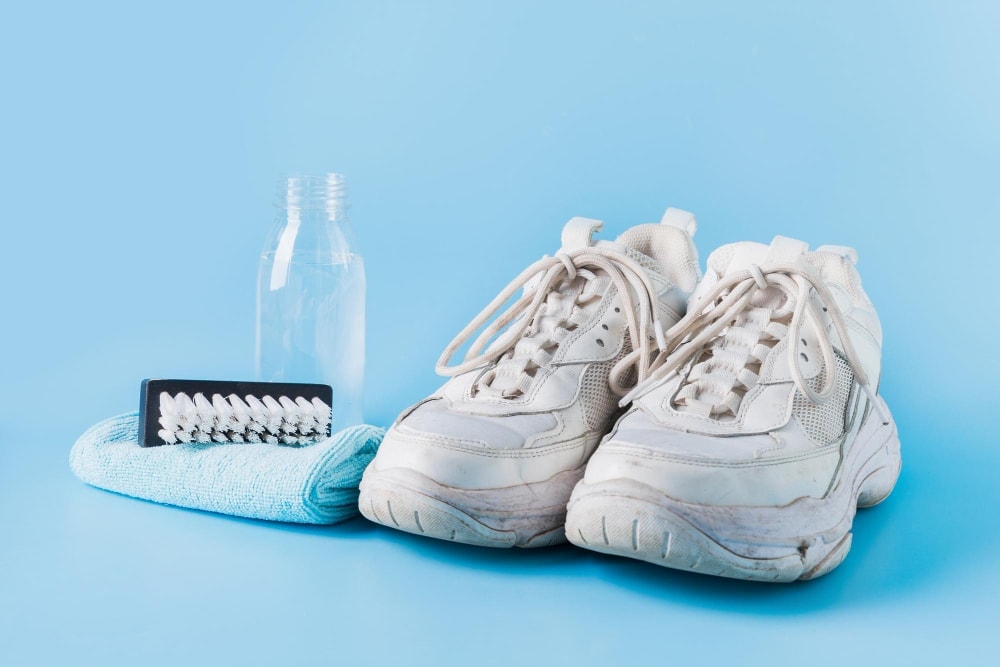
Shoe Care and Maintenance Tips:
Dry Wet Shoes Quickly
After a rainy run, remove the insoles and stuff your shoes with newspaper. The newspaper helps absorb moisture quickly. A plastic bag around the newspaper can help prevent ink transfer, though most modern newspapers use non-staining ink.
Alternate Pairs
If you run frequently in wet conditions, having alternate pairs of shoes allows one pair to fully dry out between runs, extending their lifespan and comfort.
Clean Off Mud
Don’t let mud and debris sit on your shoes. Brush them off after each run to maintain optimal grip and prevent material breakdown.
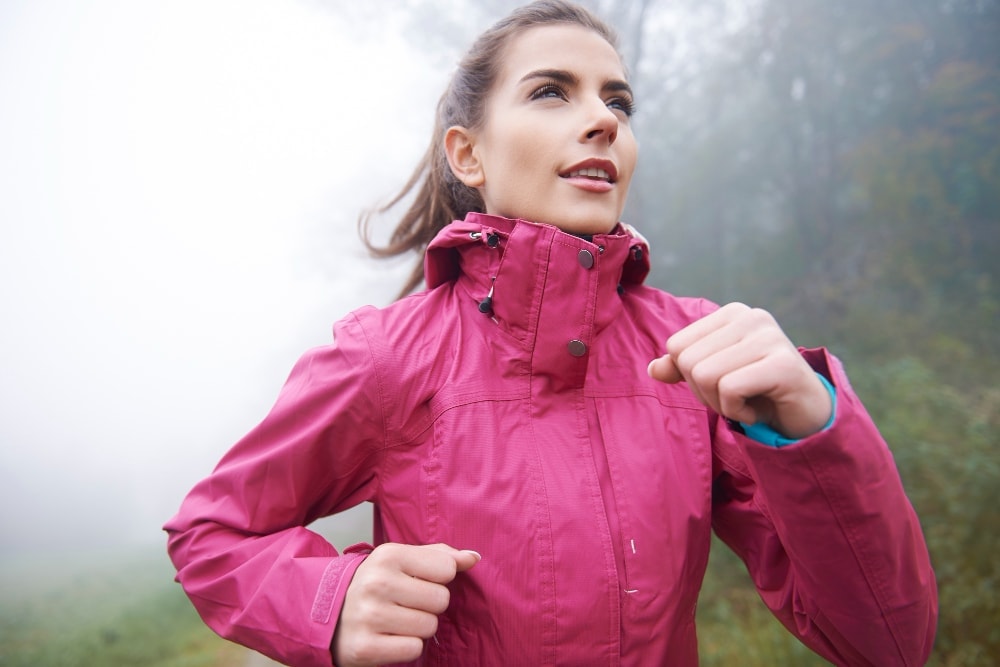
Rainy Days in Layers: Introducing Outer Layers
Staying dry is not just about comfort; it’s all about maintaining your performance. Think about it: if your clothes get soaking wet, they become heavy, chafe, and actually make you colder by pulling heat away from your body. That’s a surefire way to slow down and feel crummy. On the flip side, piling on too many layers when it’s still warm and humid (which it usually is here, even during a downpour!) means you’ll just end up a sweaty, overheated mess.
So, what’s the secret? Layering!
Outer Layer for Rainy Runs
This is your main shield against the rain. When you’re picking one out, here’s what to look for:
Lightweight and Breathable
We’re not talking about heavy winter coats here! You need something that feels light on your body and lets your sweat escape, so you don’t feel like you’re running in a sauna.
“Water Resistant” or Waterproof
A water-resistant jacket is great for light drizzles or sudden short showers, letting water bead off. But for those proper downpours we get, a fully waterproof jacket is your best friend. Look for ones with sealed seams to make sure no water sneaks in.
The Right Materials
Forget cotton, seriously. When cotton gets wet, it stays wet and heavy forever. Instead, go for technical polyester, nylon, or special blends. These fabrics are designed to repel water and dry super fast.
Smart Features
An adjustable hood is a lifesaver for keeping rain out of your eyes and off your face. And vents (like zippers under the arms or mesh panels) are brilliant for letting excess heat out, preventing you from overheating.
Your Simple Layering Guide for Wet Weather
Dressing smart means you’ll stay warm without feeling weighed down, even when it’s humid and rainy. It’s a simple three-step process:
Base Layer: This is what is directly against your skin. Choose something moisture-wicking (like technical synthetic fabric) to pull sweat away from your body and keep your skin feeling dry.
Mid-layer (Optional): On those rare, cooler “rainy days” (perhaps after a strong typhoon, or if you’re up in Baguio!), you might want an extra, lightweight layer for warmth. Otherwise, you can skip this one.
Outer Layer: This is your “water-resistant shell” we just talked about. It’s your ultimate protection against the rain.
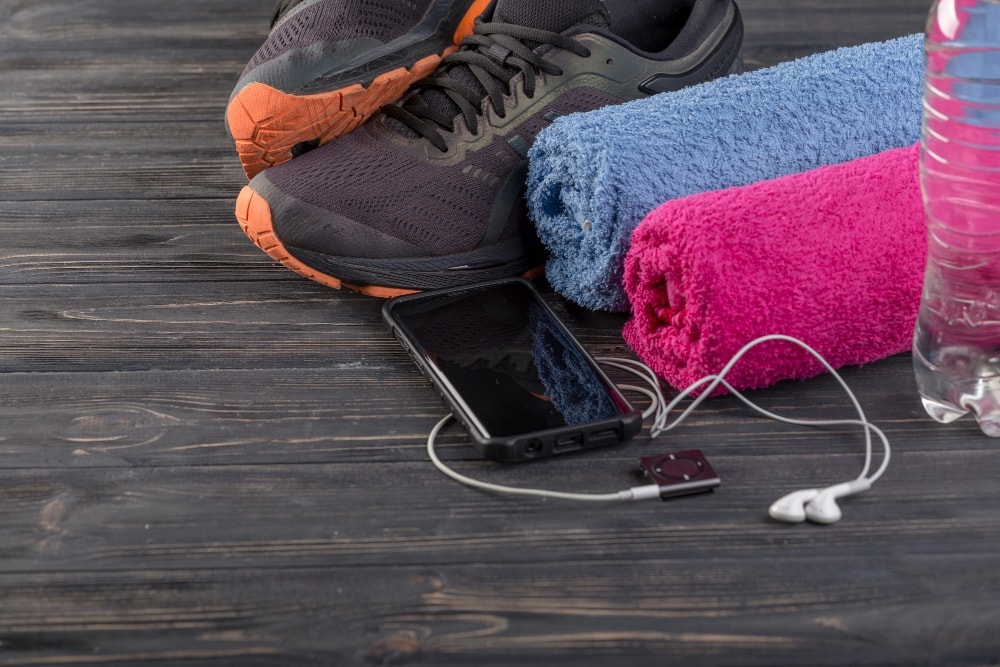
Staying Rain Safe and Visible
One more super important thing to consider, especially here in the Philippines, where “rainy days” can significantly reduce visibility: being visible and knowing when to adjust your plans. When it’s pouring, drivers and even fellow runners might have a tough time spotting you, and your safety is paramount. Here are some tips for staying safe and visible: always wear reflective gear – consider wearing neon vests, flashing armbands, or even reflective bands on your shoes or hat. It makes a huge difference! Try to plan your runs for daylight or early evening, as these offer much better natural visibility than early morning or late-night downpours. When choosing your route, stick to familiar, well-drained paths and avoid any areas known for flooding, as this can conceal potholes or make conditions treacherous. Most importantly, be ready to be adaptable: if the weather takes a turn for the worse with heavy rain or strong winds, it’s always smarter to adjust your run or just opt for an indoor run with a treadmill session instead. Your safety is worth it!
Essential Accessories for Wet-Weather Running
A truly great rainy run is often about those little things that just make everything easier and safer. Don’t underestimate how much these can improve your experience!
Hats or Caps: They keep the rain from running directly into your eyes, helping you see clearly, and keep your head a bit warmer.
Gloves: If it’s one of those unusually cool rainy days here, or you’re running at higher elevations, lightweight, water-resistant gloves can make a big difference in keeping your hands comfortable.
Waterproof Phone Case: This is a non-negotiable if you bring your phone. Invest in a good waterproof case or pouch to protect your device, whether it’s in your pocket or an armband.
Plastic Bag: Always stash a small plastic bag in your pocket! It’s super handy for keeping electronics completely dry inside another pocket, or for storing “wet clothes” after your run so they don’t soak everything else in your bag.
Running Socks: Don’t overlook your socks! Choose thick, moisture-wicking running socks made from synthetic materials. They help prevent blisters by wicking away moisture and keeping your feet dry, even if some water gets into your shoes.
Hydration and Post-Run Care
The rainy season can be a bit tricky. Even though it feels cooler and less oppressive than peak summer, you’re still working hard and sweating. So, hydration is just as vital as it is on a sunny day.
Hydrate During and After: Don’t forget to carry water with you, or at the very least, make sure you rehydrate immediately after your run to replenish lost fluids.
Change immediately: As soon as you’re done, get out of those “wet clothes” right away to avoid chills and prevent your body temperature from dropping too much.
Skin Care: Apply anti-chafing balm to your inner thighs, underarms, or any other sensitive areas before running, especially on longer routes or on race day. Wet fabric rubbing against skin is a recipe for irritation.
Post-Run Warm-Up: Once you’ve changed, swap into dry, warm clothes. This helps your body regulate its temperature and recover properly after being exposed to the elements.

Celebrate Life’s Milestones in Camella!
House and Lot & Condominium for Sale in the Philippines

